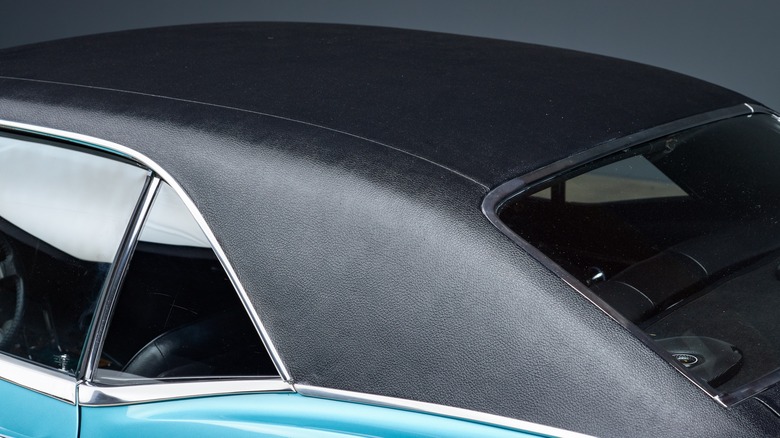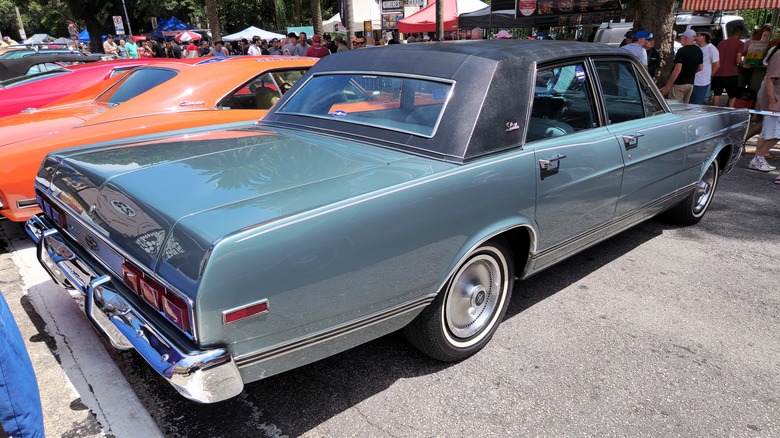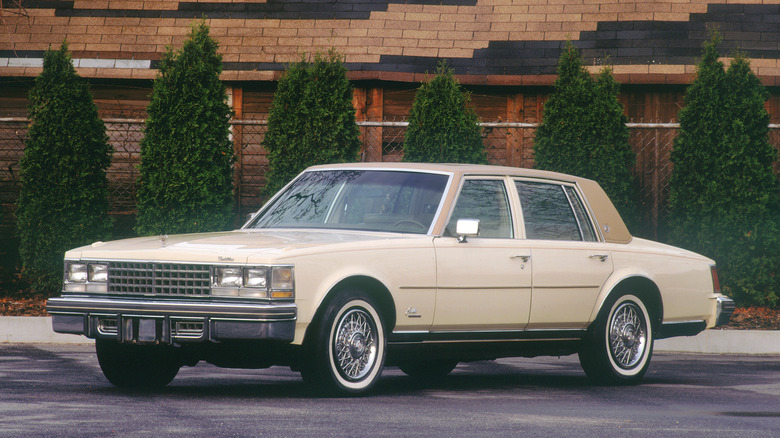Why Did Old Cars Have Vinyl Roofs?
These days, if you use the word vinyl when describing a car's exterior styling, the first thing that comes to mind, especially for younger people, it would be a colored vinyl body wrap. These days, a wrap is a cost-effective and relatively easy way to change the look of a vehicle, and wrapping your car can even be done as DIY job.
However, before the era of body wraps, when someone referred to a car having a vinyl roof, it meant something more than just a roll of material and some adhesive, and these vinyl roofs weren't done at home after the fact. They were done on the assembly line. The factory vinyl roof could be considered one of history's most distinct automotive styling trends, gaining popularity in the early 1960s and lasting in various forms until the 1990s, before disappearing completely.
Why did cars have vinyl roofs? It certainly wasn't for any functional benefit. They weren't used to protect or preserve paint the way modern vinyl wraps are. Nope, the vinyl roof was all about style — one more way to add color and character to a car's exterior during a time when there were no shortage of options for personalization off the factory floor.
More than just color
Vinyl, or other forms of fabric-covered roofs, first began appearing on certain luxury and specialty cars during the late '40s and early '50s, but it wasn't until the 1960s that the vinyl roof option began to take off. Initially, the idea was to give fixed-roof cars the more upscale appearance of a convertible, and as they evolved, a way to simply add some texture and color contrast to a car's exterior.
Unlike the vinyl wraps of today, which are all about color, these factory vinyl roofs also offered unique patterns and fabric designs, with some automakers even offering things like flower patterns or even textures inspired by alligator skin. At the peak of their popularity from the mid '60s into the early '70s, there were factory vinyl tops available on everything from muscle cars to pickup trucks. Even the C3 Corvette could be had with a vinyl-covered removable hardtop.
In the '70s and '80s, vinyl tops continued to be popular, but shifted more toward the luxury car segment. In the '70s especially, vinyl tops reached peak flamboyance, paired with things like opera windows. In the late '80s and early '90s, with the size and shape of cars becoming smaller and more aerodynamic, vinyl tops felt increasingly archaic and out of date. Buick and Cadillac were the last ones to offer factory vinyl roofs in 1996, though aftermarket and dealer conversions have long been available for those who really want the vinyl top look.
Vinyl top issues
While they may have disappeared from modern cars, if you go to a classic car show today, you'll still see a lot of vinyl roofs, with many of them restored and re-covered to look like new. Vinyl tops aren't loved by all classic car fans, though. When it comes to vehicle restoration and body work, vinyl tops can be a bit of a nightmare. For starters, the vinyl can distress and deteriorate from exposure to the elements, often in a more noticeable manner than a traditional painted roof.
Even worse, moisture can get trapped between the vinyl material and the metal of the roof, causing not just the material to deteriorate, but also the rusting of the roof metal itself. Even in regions where cars don't typically get a lot of rust, a vehicle that has or had a vinyl top at one point can be carrying major rust and rot issues up top, and it's for that reason that many enthusiasts and restorers try to avoid them when possible.
It's really for those rust and durability reasons alone, and not so much any aesthetic shortcomings, that vinyl tops are regularly considered one of the auto industry's worst design trends, and likely one that won't be returning anytime soon.


